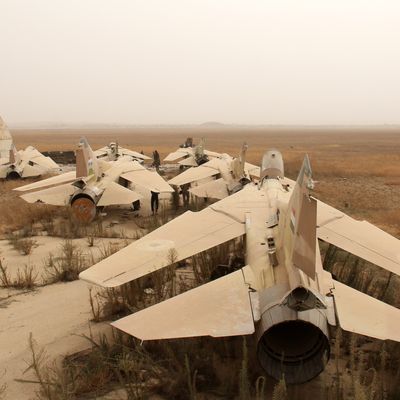
Until two days ago, the last time an American pilot shot down a foreign military plane the United States was at war with Serbia. Bill Clinton was the president. The U.S. military didn’t have weaponized drones. And Yankees’ rookie star Aaron Judge was a 7-year-old who rooted for the San Francisco Giants.
What happened on Saturday in the air over eastern Syria, when an American F/A-18 brought down a Syrian SU-22 fighter jet, is a very big deal.
Two factors have made situations where U.S. pilots might be forced to take down an enemy aircraft unlikely. First, most of our adversaries in the post-9/11 world have simply lacked an air force. But because U.S. air power is so overwhelming, even opponents who have jets have mostly chosen not to match them up with ours. Iran, for example, uses its Navy to harass smaller American patrol boats in the Persian Gulf — but leaves the planes at home.
Syrian leader Bashar al-Assad chose to test our pilots, even after, reports say, the U.S. warned both Syrian and Russian military contacts. That suggests it will not be possible to keep the U.S. fight against ISIS separate from the Syrian conflict anymore.
Americans should understand why the downing over the weekend happened, and why the U.S. is in a position where it is likely to enter more and more military exchanges with Syrians — and perhaps with their main backers, the Russians and Iranians.
Through a civil war that has lasted six years and killed well over 300,000 civilians, Assad has hung onto power, regained the initiative, and recaptured large parts of Syria by making careful choices – including, for the most part, leaving U.S. forces alone. He had seemed quite content to allow ISIS to control large swathes of Syria. But now ISIS is under pressure from multiple sides, and Assad likely feels he cannot allow the U.S. and its allies to gain control of a substantial chunk of Syrian territory by ending ISIS’s reign.
Interactions between Assad’s forces and the U.S. have spiked over the last month, both near ISIS’s capital of Raqqa — where the plane was shot down — and further south, where the U.S. has carried out three “self-defense” strikes and shot down a Syrian drone. But instead of pulling back, Syrian forces kept coming for American-allied groups.
That should tell us just how badly Assad and his Russian allies want to prevent U.S., Syrian opposition, and Kurdish forces from taking control of any sizable chunk of Syria. Washington, remember, wants ISIS deprived of the safe zone where, it believes, the terrorist group is developing laptop bombs and promoting – if not actually masterminding – terror attacks in the region, Europe, and beyond. But our Syrian and Kurdish allies want something quite different – to build up their own power against Assad’s regime, and then expand into other parts of Syria.
So Assad cannot allow them to win. That means we should not expect the loss of one airplane to deter him, any more than the bombing of an airbase did earlier this spring. He will keep coming.
Americans are used to the idea that U.S. involvement in the conflict in Syria is limited and remote. But that is less and less true. Because the Trump administration ended the practice of announcing numbers of Americans on the ground in Iraq and Syria, we aren’t sure how many U.S. personnel are in the mix. There were 500 Americans on the ground in January. News reports say an additional 400 have been sent under the Trump administration so far, and a proposal for an additional 1,000 was on the table this spring.
That’s a lot of targets, and not just for Assad; former White House official Colin Kahl notes that Iran too is starting to “up its game in the contest for the carcass of the caliphate.” There’s no reason to doubt that Assad will spend 1,000 lives to prevent Washington and its allies from gaining control of a swath of Syrian territory – or that Russia and Iran will continue to support him in doing so. Who does the Trump administration believe will hold the territory after ISIS is driven out? That isn’t a job that can be done with U.S. fighter jets. And the job of determining what the ultimate goal of U.S.-Syrian fighting is, and how many American lives it’s worth, is not one that ought to be left to events, or outsourced to the Pentagon.





























